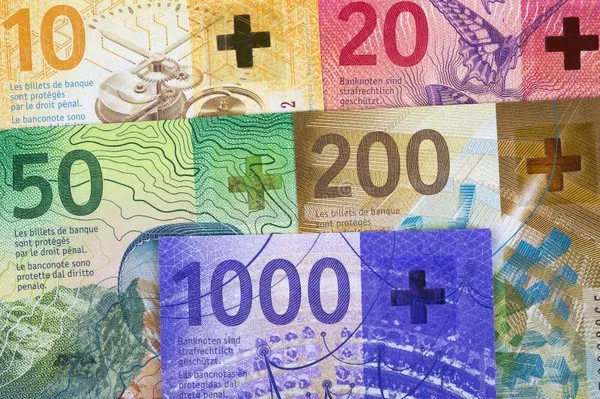The Swiss franc, symbolized as CHF (Confoederatio Helvetica Franc), is the official currency of Switzerland. Renowned for its stability, the Swiss franc holds a unique position in the global financial landscape. In this article, we will delve into the various aspects of the Swiss franc, exploring its history, key features, significance, and the country’s monetary policies. We will also examine the factors that contribute to Switzerland’s widespread use of its currency, both domestically and internationally.
Historical Perspective:
Origins of the Swiss Franc:
The Swiss franc dates back to the 19th century when Switzerland adopted a new federal constitution in 1848. It was introduced as the country’s official currency in 1850, replacing various regional currencies. The establishment of the Swiss National Bank (SNB) in 1907 further solidified the franc’s role as Switzerland’s national currency.
Franc’s Historical Stability:
The Swiss franc has long been recognized as a safe-haven currency due to Switzerland’s historical political neutrality, sound financial system, and strong commitment to monetary stability. Throughout turbulent periods, such as World Wars and global economic crises, the franc has maintained its value, earning the trust of investors and market participants.
Key Features and Significance:
Symbol and Currency Denominations:
The Swiss franc is symbolized by “CHF” and subdivided into 100 smaller units called centimes. Currency notes come in denominations of 10, 20, 50, 100, 200, and 1,000 francs, while coins are available in denominations of 5, 10, 20 centimes, and 1, 2, and 5 francs.
Currency Stability and Safe-Haven Status:
Switzerland’s political stability, strong economy, low inflation, and prudent monetary policies contribute to the Swiss franc’s status as a safe-haven currency. During times of global economic uncertainty, investors often flock to the franc as a store of value, leading to its appreciation. This characteristic has significant implications for Switzerland’s domestic and international economic activities.
Domestic Use and Importance:
Currency in Daily Transactions:
Within Switzerland, the Swiss franc is widely used as the primary medium of exchange. It is accepted by all businesses, including retail stores, restaurants, and service providers. The widespread use of the franc simplifies domestic transactions, enabling efficient economic interactions and fostering price stability.
Role in Monetary Policy:
The Swiss National Bank plays a crucial role in maintaining price stability and controlling inflation through its monetary policy decisions. The central bank utilizes various tools, such as interest rates and foreign exchange interventions, to manage the value of the franc. These measures aim to balance the needs of the Swiss economy, including export competitiveness and domestic price stability.
International Use and Factors Driving its Popularity:
Financial Services Industry:
Switzerland’s financial services sector, particularly private banking and asset management, has played a significant role in promoting the international use of the Swiss franc. The country’s reputation for financial stability, confidentiality, and expertise has attracted foreign investors and facilitated the use of the franc in global financial transactions.
International Trade and Investments:
Switzerland’s robust export-oriented economy has further contributed to the international usage of the Swiss franc. The country is known for its high-quality products, such as watches, machinery, pharmaceuticals, and precision instruments. International businesses engaged in trade with Switzerland often utilize the franc to facilitate transactions, manage currency risks, and maintain stable pricing.
Swiss Franc as a Reserve Currency:
The Swiss franc has earned recognition as a reserve currency, held by central banks and financial institutions worldwide. Its stability, liquidity, and diversification benefits have led to the accumulation of Swiss franc reserves as a risk management strategy. This status also enhances Switzerland’s global economic influence and promotes the use of its currency.
Challenges and Future Outlook:
Exchange Rate Volatility:
While the Swiss franc’s stability is considered a strength, it can also present challenges. Periods of excessive appreciation can negatively impact Switzerland’s export-driven economy, as it reduces the competitiveness of Swiss products in global markets. To mitigate this challenge, the Swiss National Bank occasionally intervenes in the foreign exchange market to prevent excessive currency appreciation.
Evolving Financial Landscape:
The rapid advancement of financial technology (fintech) and the emergence of digital currencies pose both challenges and opportunities for the Swiss franc. As cryptocurrencies and digital payment systems gain popularity, the SNB and Swiss regulators will need to carefully navigate the evolving landscape to ensure the continued relevance and competitiveness of the Swiss franc.
Conclusion:
The Swiss franc, Switzerland’s official currency, stands out as a symbol of stability, trust, and financial prudence. Its historical stability, safe-haven status, and wide acceptance domestically and internationally contribute to the franc’s significance in the global financial system. Switzerland’s political neutrality, strong economy, and robust financial services industry have all played a crucial role in driving the popularity and usage of the Swiss franc. As the financial landscape evolves, Switzerland and the Swiss National Bank will continue to adapt and address challenges to maintain the franc’s position as a global currency of choice.


